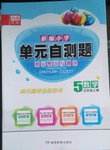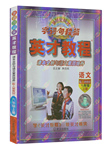题目内容
LEEDS, England--- A Leeds University psychology professor is teaching a course to help dozens of Bristons forgive their enemies.
“The hatred we hold within us is a cancer,” Professor Ken Hart said, adding that holding in anger can lead to problems such as high blood pressure and heart disease.
More than seventy people have become members in Hart’s first 20-week workshop in London--- a course he says is the first of its kind in the world.
These are people who are sick and tired of living with a memory. They realize their bitterness is a poison they think they can pour out, but they end up drinking it themselves, said Canadian- born Hart.
The students meet in groups of eight to ten for a two-hour workshop with an adviser every fortnight.
The course, ending in July, is expected to get rid of the cancer of hate in these people. “People have lots of the attitudes towards forgiveness,” he said. “People confuse forgiveness with forgetting. Forgiveness means changing from a negative attitude to a positive one.”
Hart and his team have created instructions to provide the training needed.
“The main idea is to give you guidelines on how to look at various kinds of angers and how they affect you, and how to change your attitudes towards the person you’re angry with,” said Norman Claringbull, a senior expert on the forgiveness project. Hart said he believes forgiveness is a skill that can be taught, as these people “want to get free of the past.”
1.According to the passage if you’re angry with somebody, you should ________.
A. try your best to defeat him or her
B. break off relations with him or her
C. persuade him or her to have a talk with you
D. relax yourself by not thinking of him or her any more
2.Afrer reading the passage we are more aware that ________.
A. high blood pressure and heart disease are caused by hatred
B. high blood pressure can only be cured by psychology professors
C. without hatred people will have less trouble connected with blood and heart
D. people who suffer from blood pressure and heart disease must have many enemies
3.If you’re a member of Hart’s workshop, you’ll _______.
A. pay a large amount of money
B. go to the course every night in twenty weeks
C. attend a gathering twice a month
D. pour out everything stored in your mind in the workshop
4.The author wrote this passage in order to _______.
A. persuade people to go to Hart’s course
B. tell us the news about Hart’s workshop
C. tell us how to run a workshop like Hart’s
D. help us to look at various kinds of anger
 新编小学单元自测题系列答案
新编小学单元自测题系列答案 字词句段篇系列答案
字词句段篇系列答案
